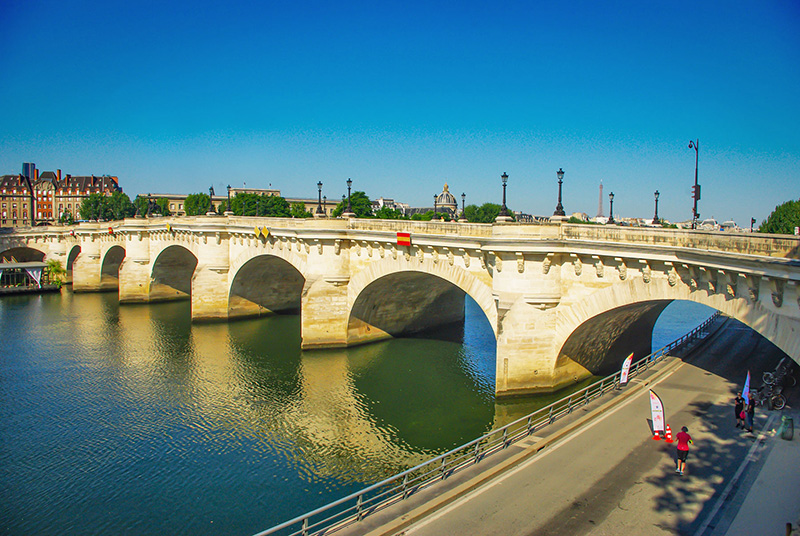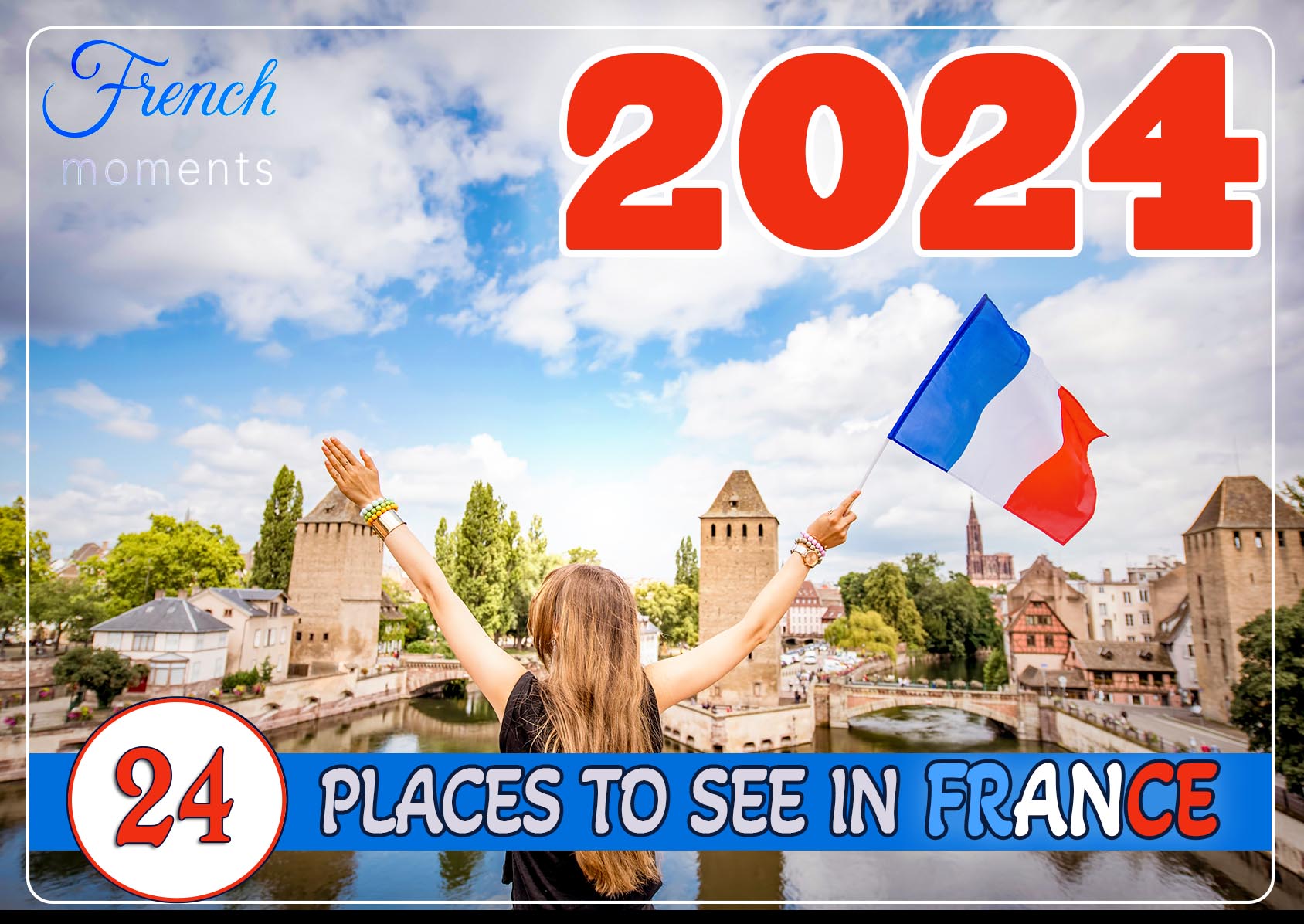Despite its name, the Pont Neuf (New Bridge) is Paris’ oldest standing bridge. Spanning the Seine between the Right and Left Banks, it crosses the western tip of the Île de la Cité.
🎦 Watch our short video on the 25 landmarks of Paris ⤵
Pont Neuf: A Brief History
Pont-Neuf is a stone bridge built in different stages between 1578 and 1607. The construction of a new bridge was decided in 1577 by King Henri III, who laid the first stone on the 31st of May 1578 in the presence of Mother Queen Catherine of Medicis and Queen Louise of Lorraine.
The construction ended in 1607 during the reign of Henri IV. The delay was due to the rebellion of the people of Paris against the king (1588-1598). In 1599, King Henry IV resumed the work and commissioned its completion to Guillaume Marchant and François Petit, who modified the initial plan. Instead of supporting houses like any other bridges in Paris, the new bridge was the first to be ‘houses free’.
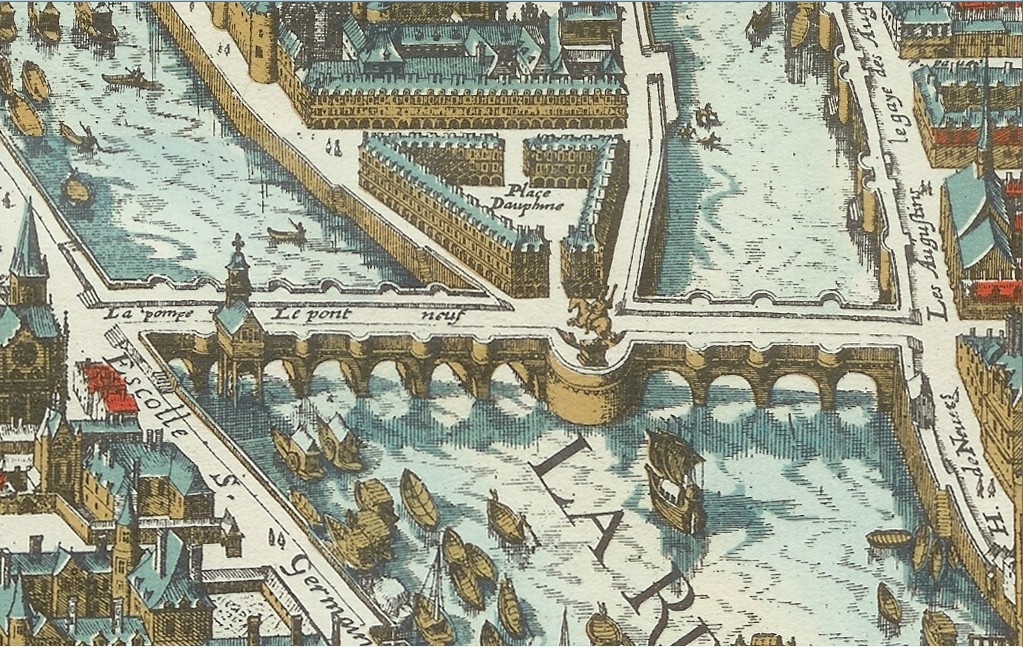
As the bridge’s construction ended in 1606, the king opened a square between the Palais de la Cité and the western point where the bridge crosses the Île de la Cité. Today, the royal square – one of the first in Paris with Place des Vosges in the Marais is called Place Dauphine.
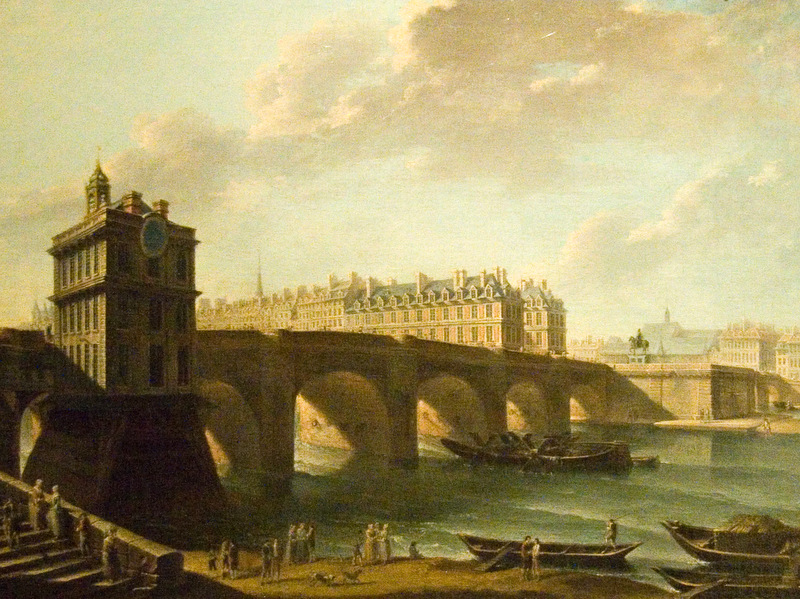
At completion, the Pont-Neuf was the only bridge to span the whole width of the River Seine. It was the only bridge and the first causeway to feature pavements, thus protecting pedestrians from horses and mud.
A place for mobile sellers
The bridge attracted itinerant merchants such as dog shearers and parasol hirers. It was also a meeting place for charlatans.
It was also a meeting place for charlatans and booksellers, who competed head-on with the other bookshops in the district. In 1619, the latter obtained a ban on this commercial competition on the Pont Neuf, which was reaffirmed by a royal decree in 1742.
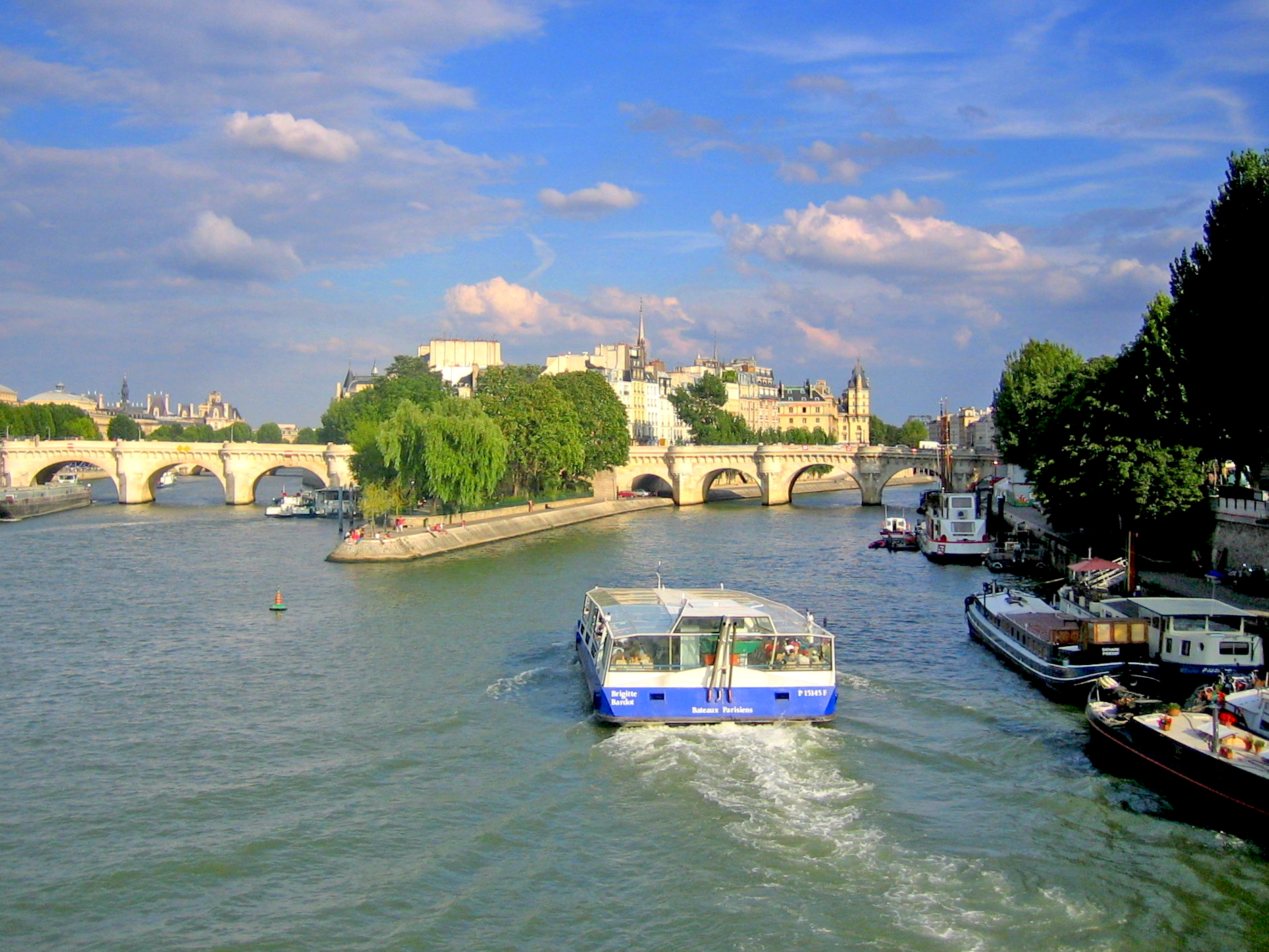
The features of the bridge
Alcoves in half-moon shapes were built on each pile where merchants and craftsmen could trade. The number of booksellers who held the first public readings accompanied by musical entertainment and open-air shows increased. They used wheelbarrows to transport their books and sold them from trays fastened to the parapets of the bridges with thin leather straps. These are the ‘ancestors’ of today’s bouquinistes of Paris.
The mascarons
Some 381 sculptures of mascarons by Germain Pilon decorate each stone bracket of the bridge.
These grotesque masks represent the heads of forest or country divinities from Greco-Roman mythology: satyrs, sylvans, etc. These figures have been used since Antiquity to protect homes and neighbourhoods from evil spirits. The artists played on the beards and hair to create almost all different sculptures.
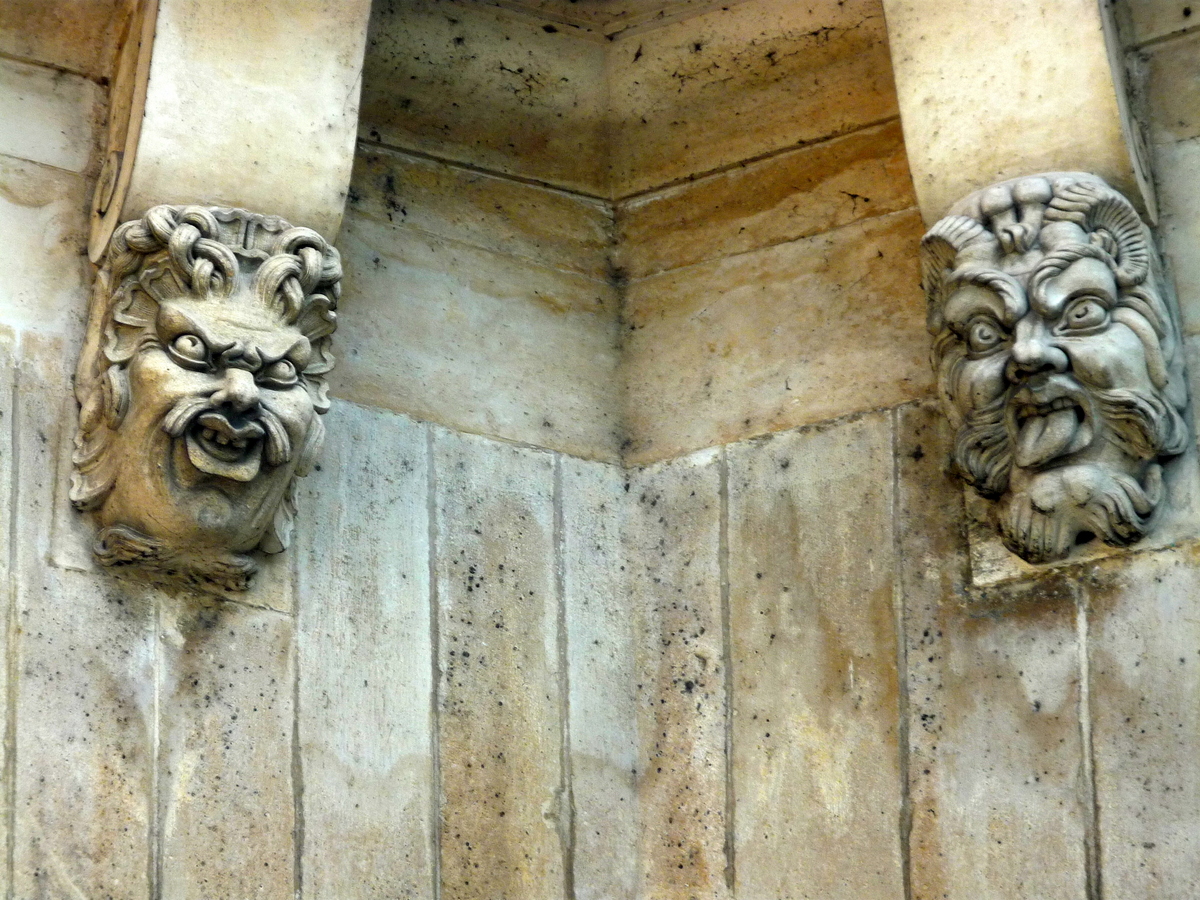
The bridge was listed as a Monument Historique by the French State in 1889.
In 1991, the Pont-Neuf became part of the banks of the River Seine, which have been listed as a World Heritage site by Unesco.
In 2007, the bridge was entirely restored by the City of Paris.
Dimensions of the Pont Neuf
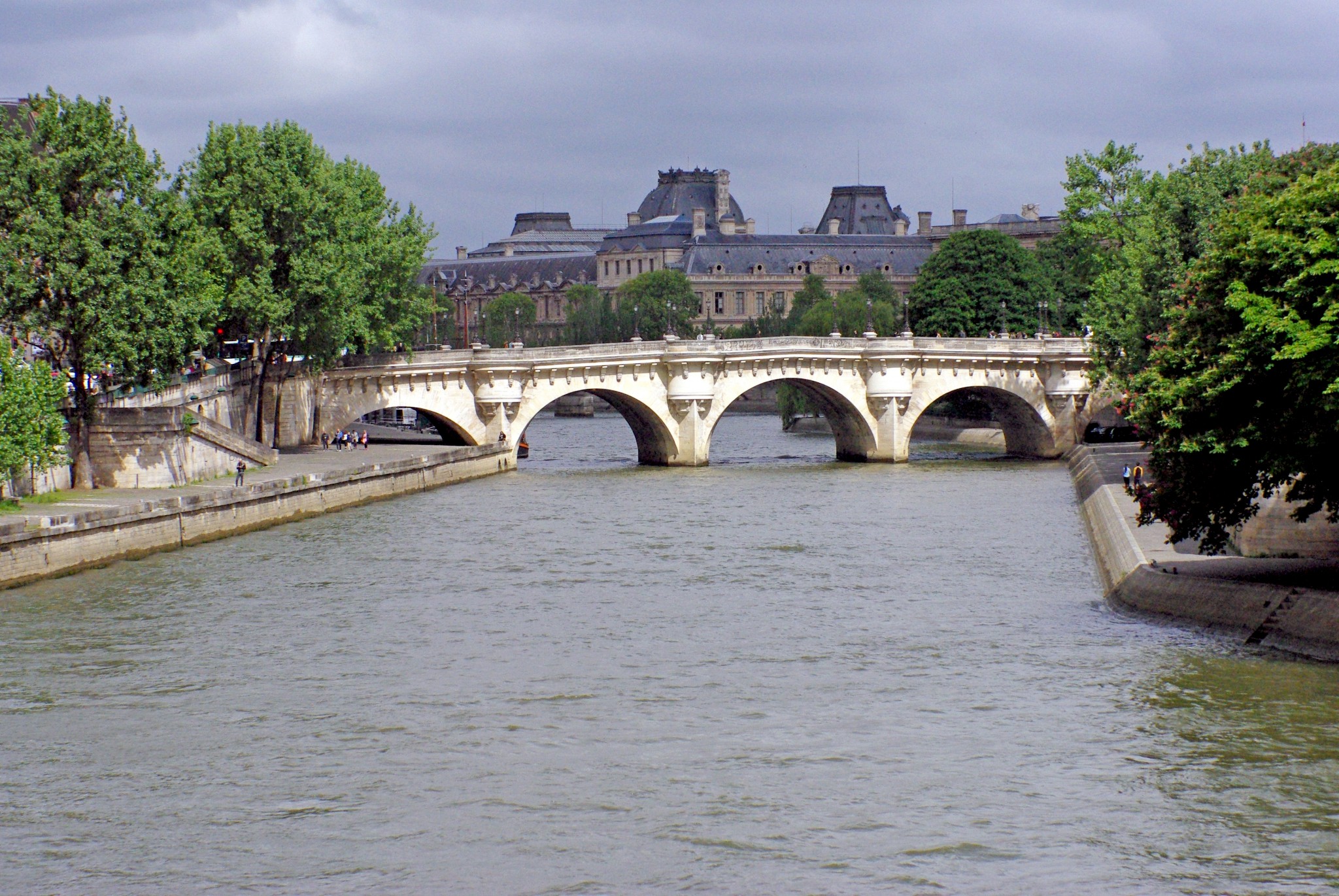
The bridge is 238 long, and its width is 20.50 m (including a causeway of 11.50m and two pavements of 4.50m each).
The bridge has two separate spans: the span leaving the Right Bank has seven arches, and that from the Left Bank has five arches.
Because of the 12 arches, it is said that the then Minister for the Economy, Laurent Fabius, chose it to symbolise the switch to the new European currency at the euro introduction ceremony on 1 January 2002. The 12 arches represented the 12 countries in the eurozone in 2002.
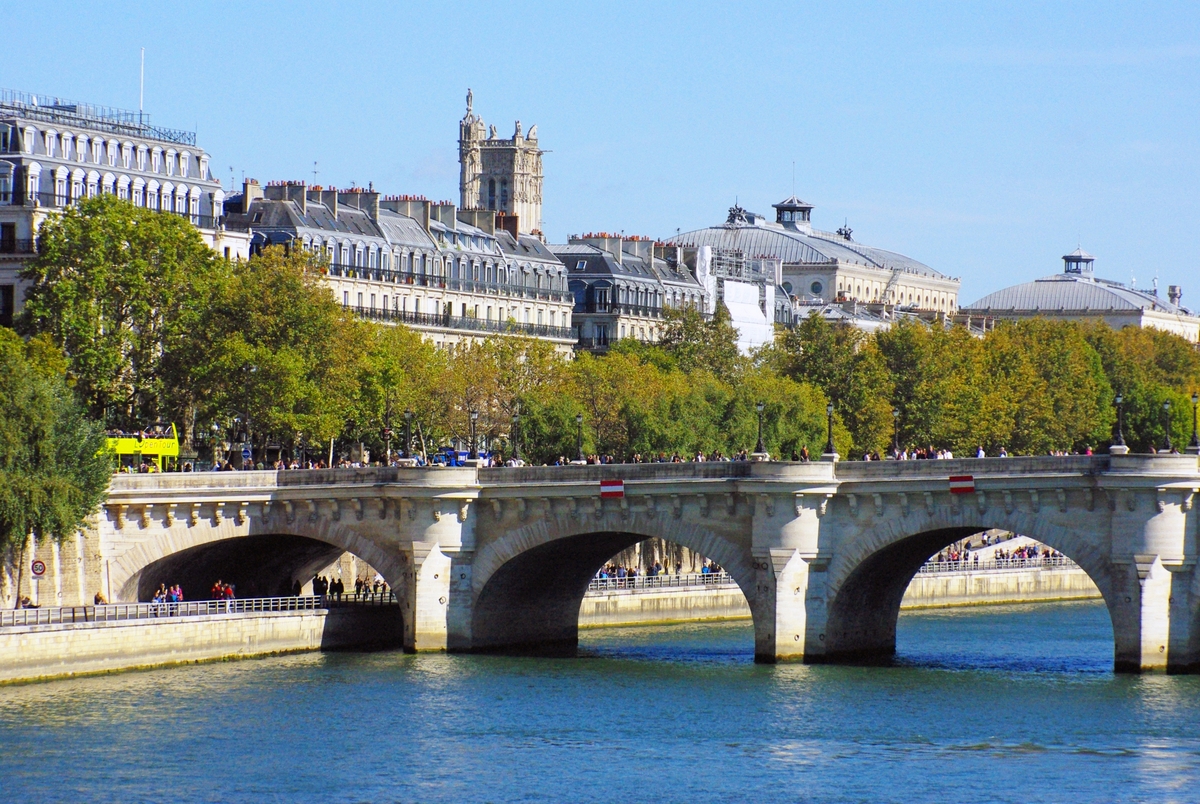
Why Pont Neuf is different from the other bridges in Paris?
The Pont Neuf differs from other Parisian bridges in many ways.
- Firstly, it was the first bridge to cross the Seine in its entire width, linking the left bank, the right bank and the western end of the Ile de la Cité.
- It had pavements (the first in Paris) and semi-circular “balconies” above each pier, where merchants and craftsmen could set up shop.
- Another novelty was the absence of houses along its edge.
- Finally, for the first time, the bridge was adorned with an equestrian statue in honour of Henri IV.
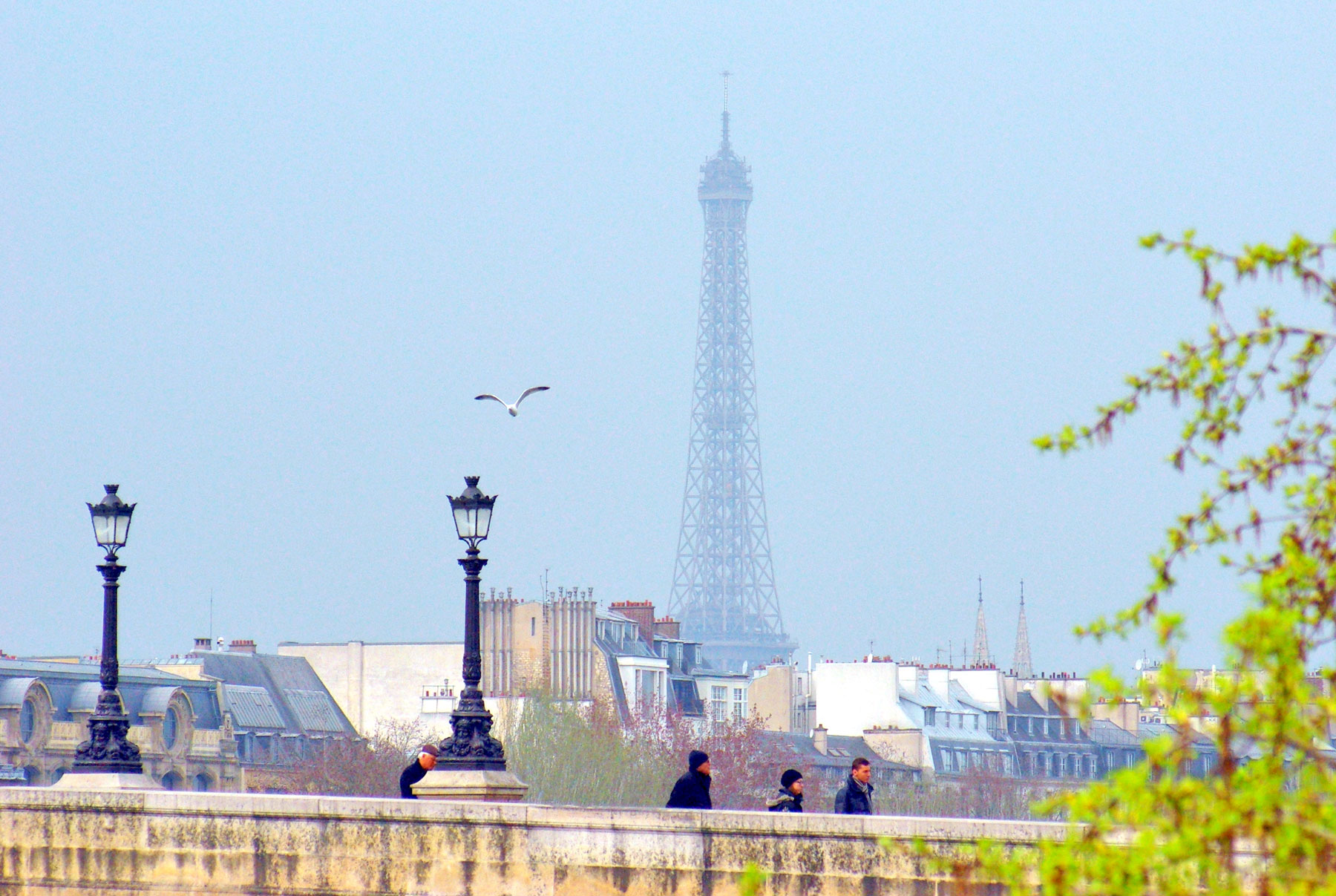
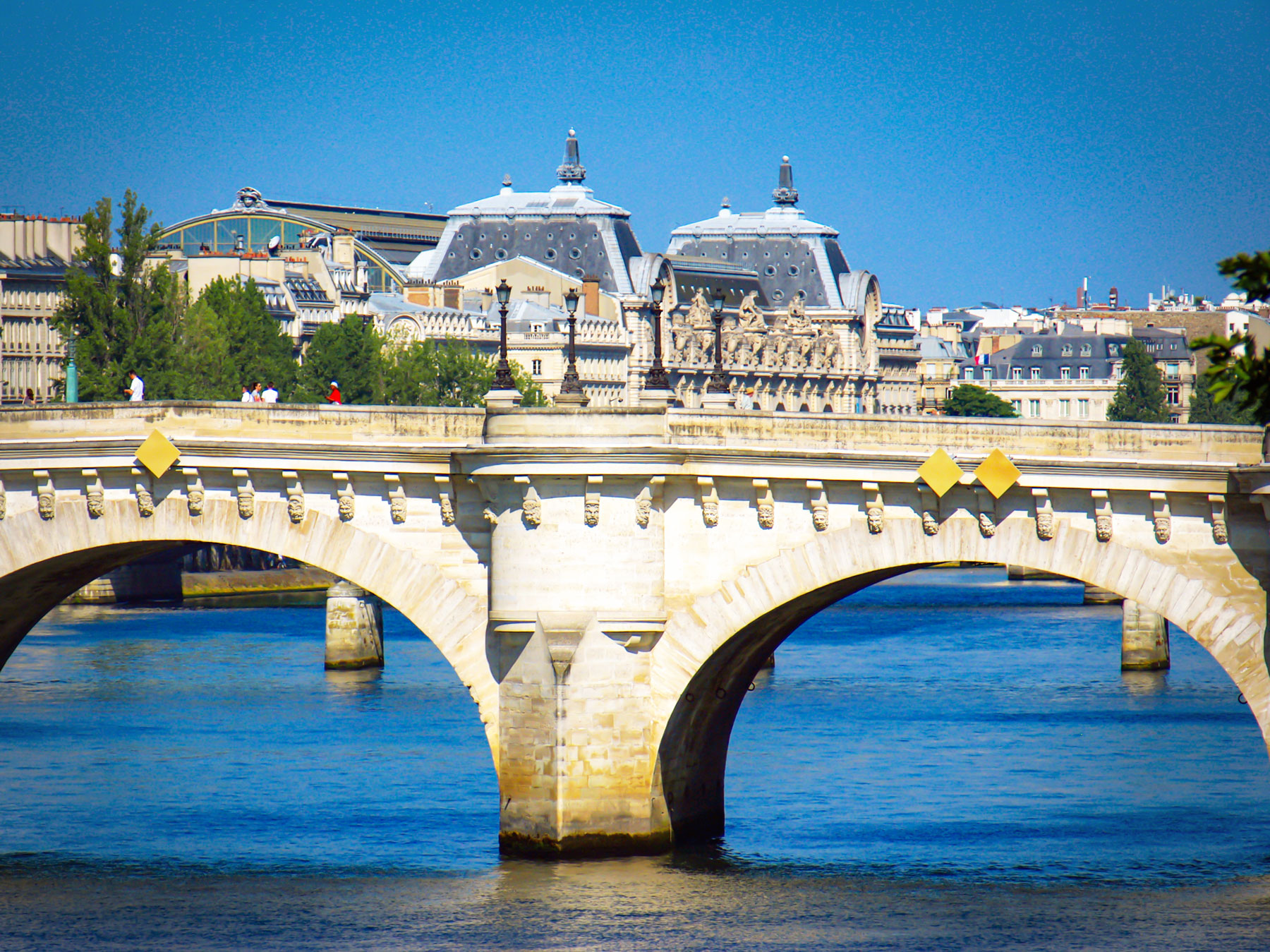
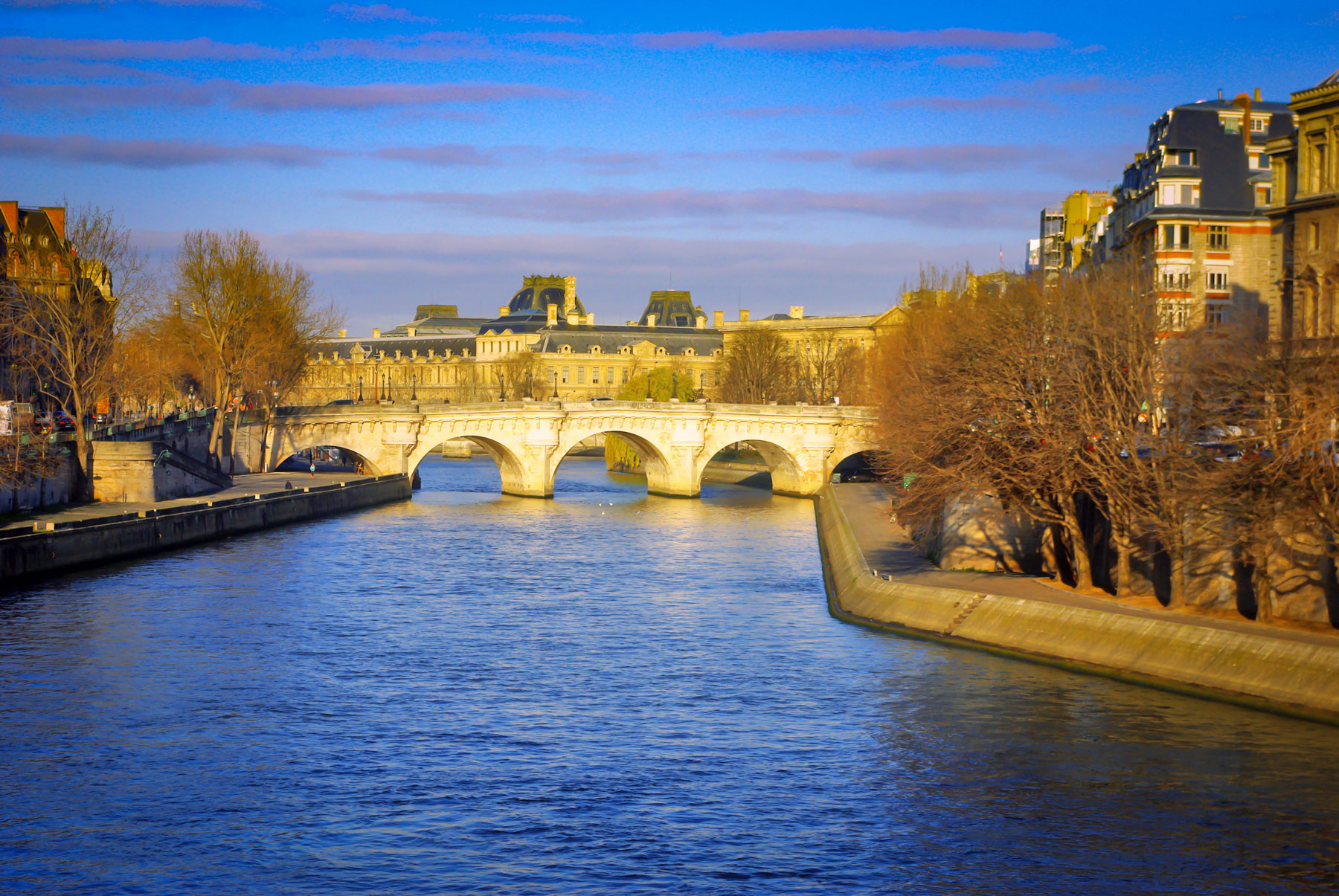
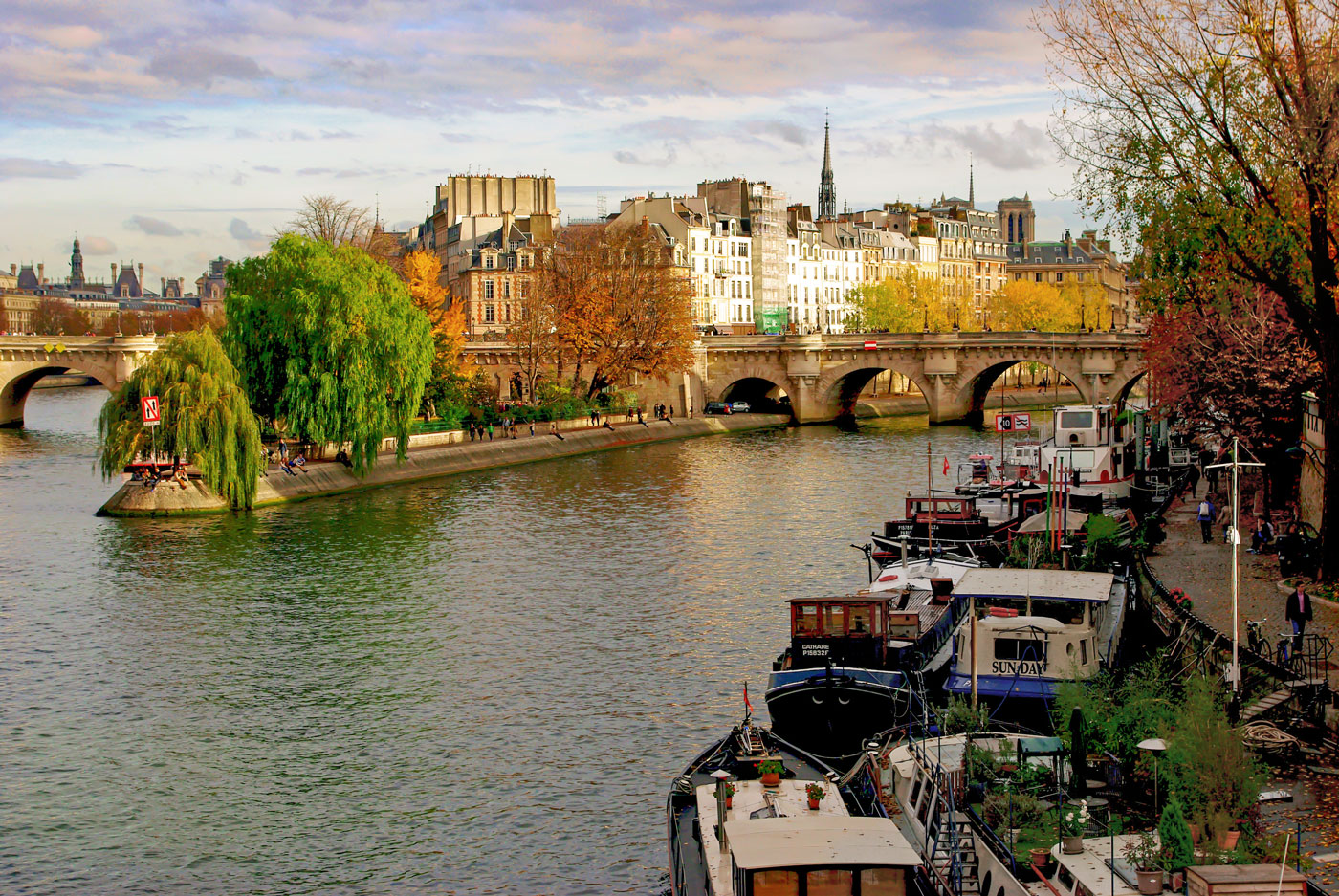
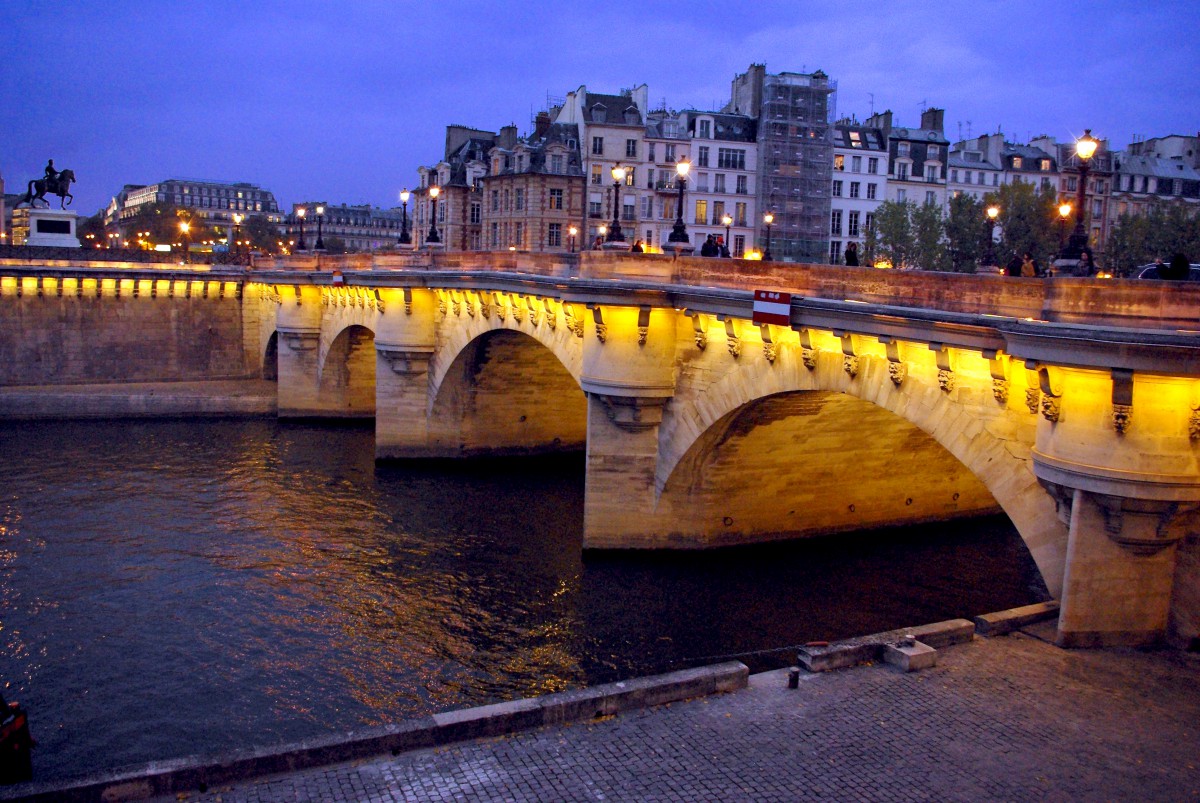
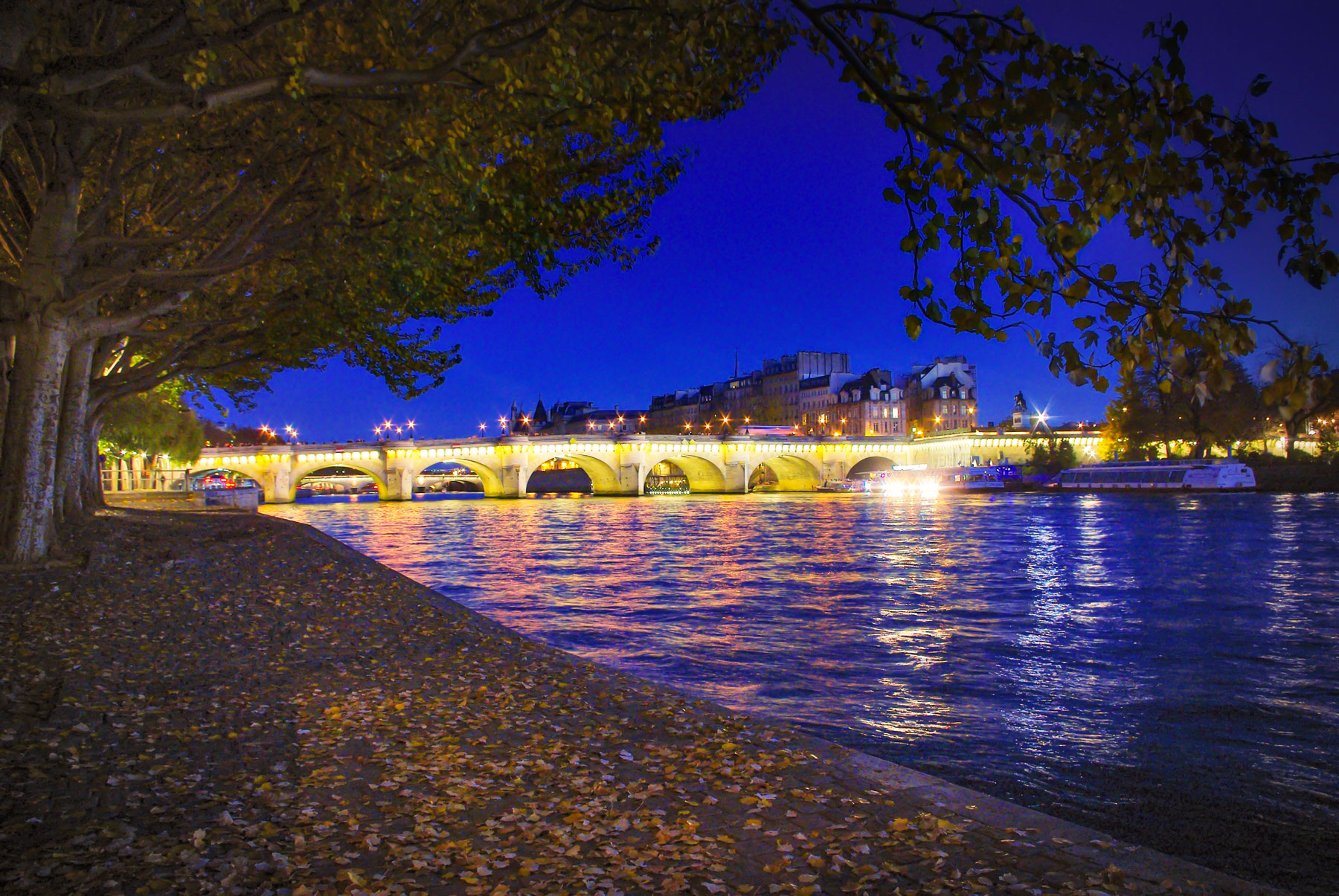
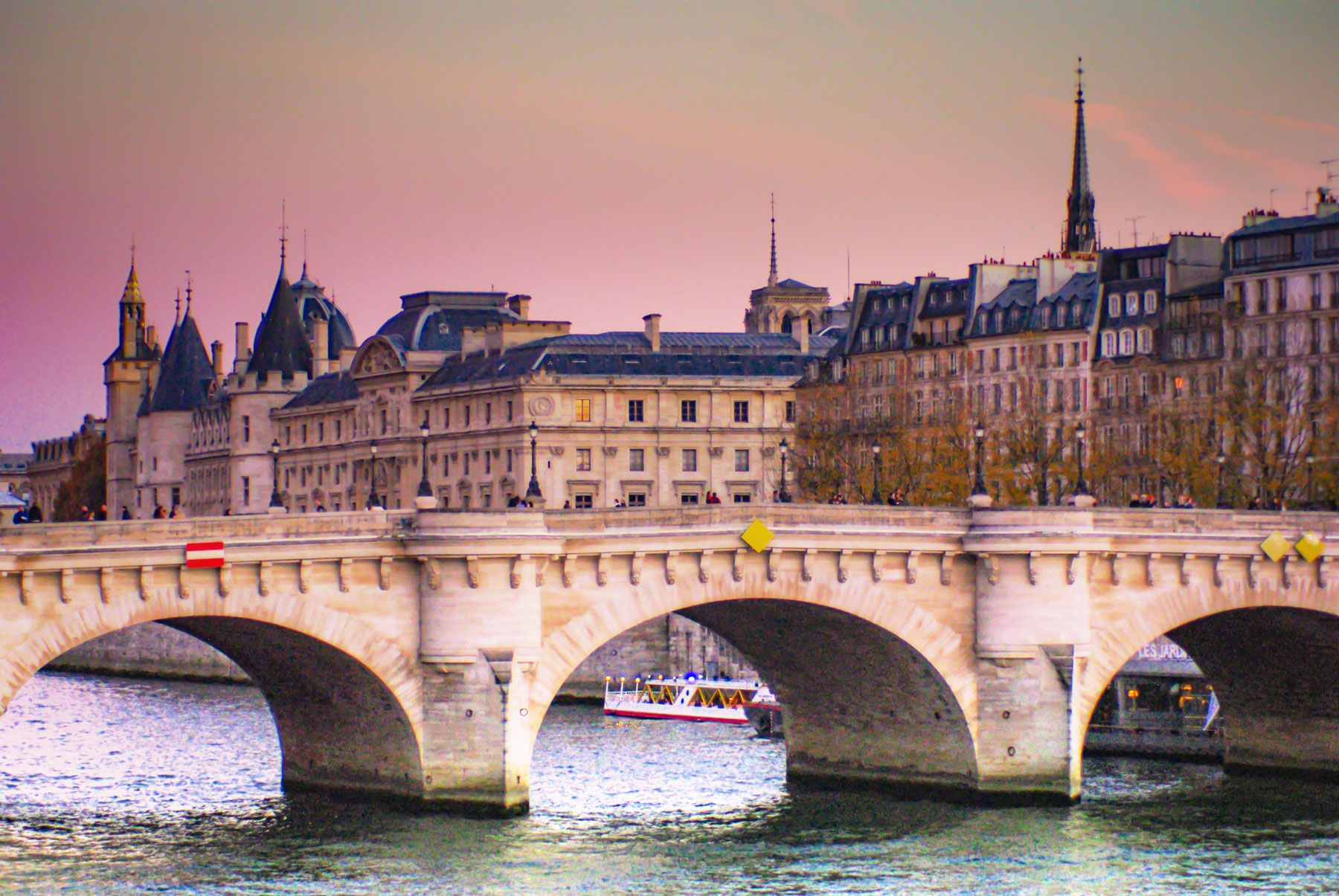
Did you enjoy what you read? If so, share this article on Facebook, X or Pinterest!

